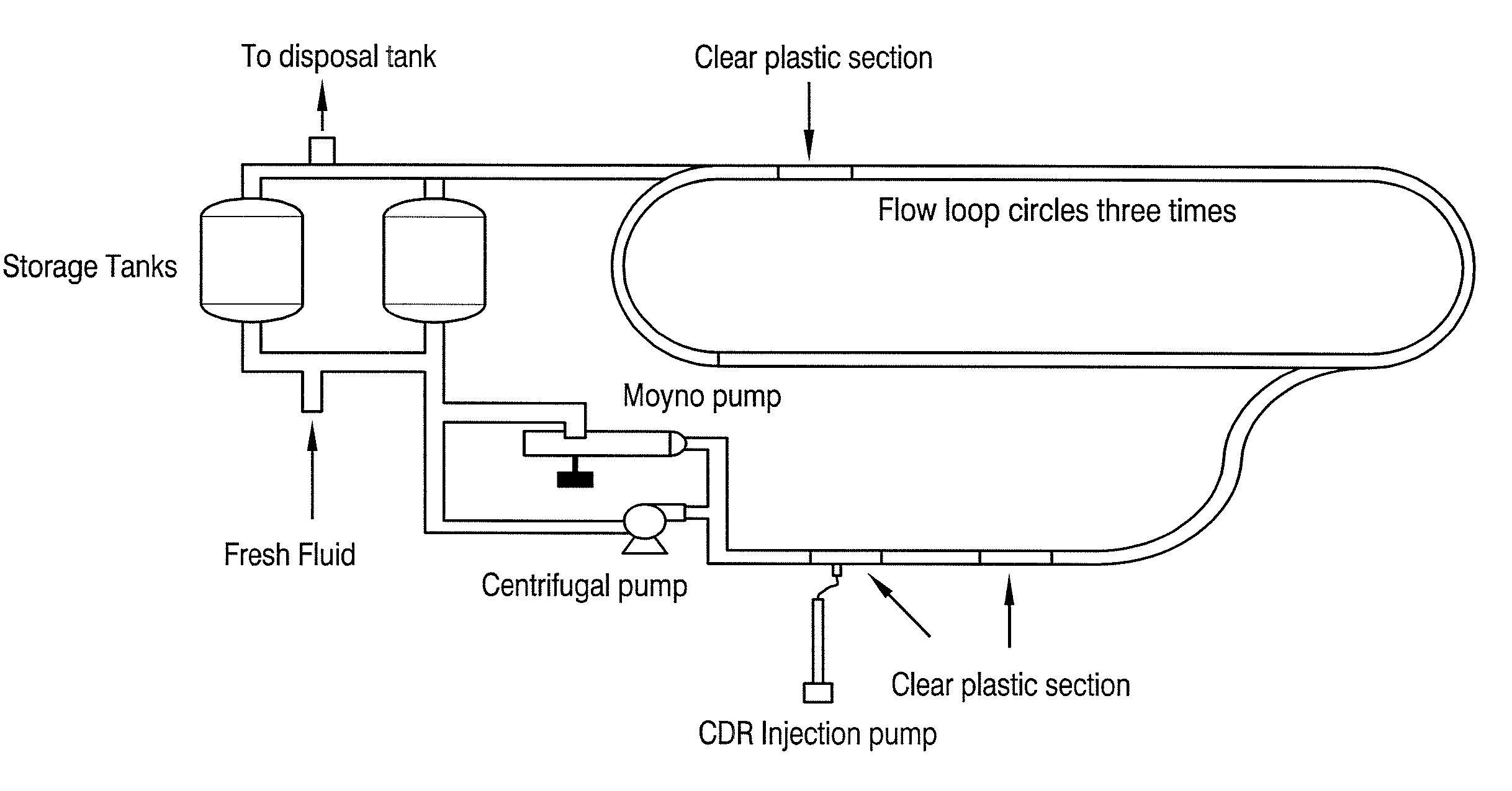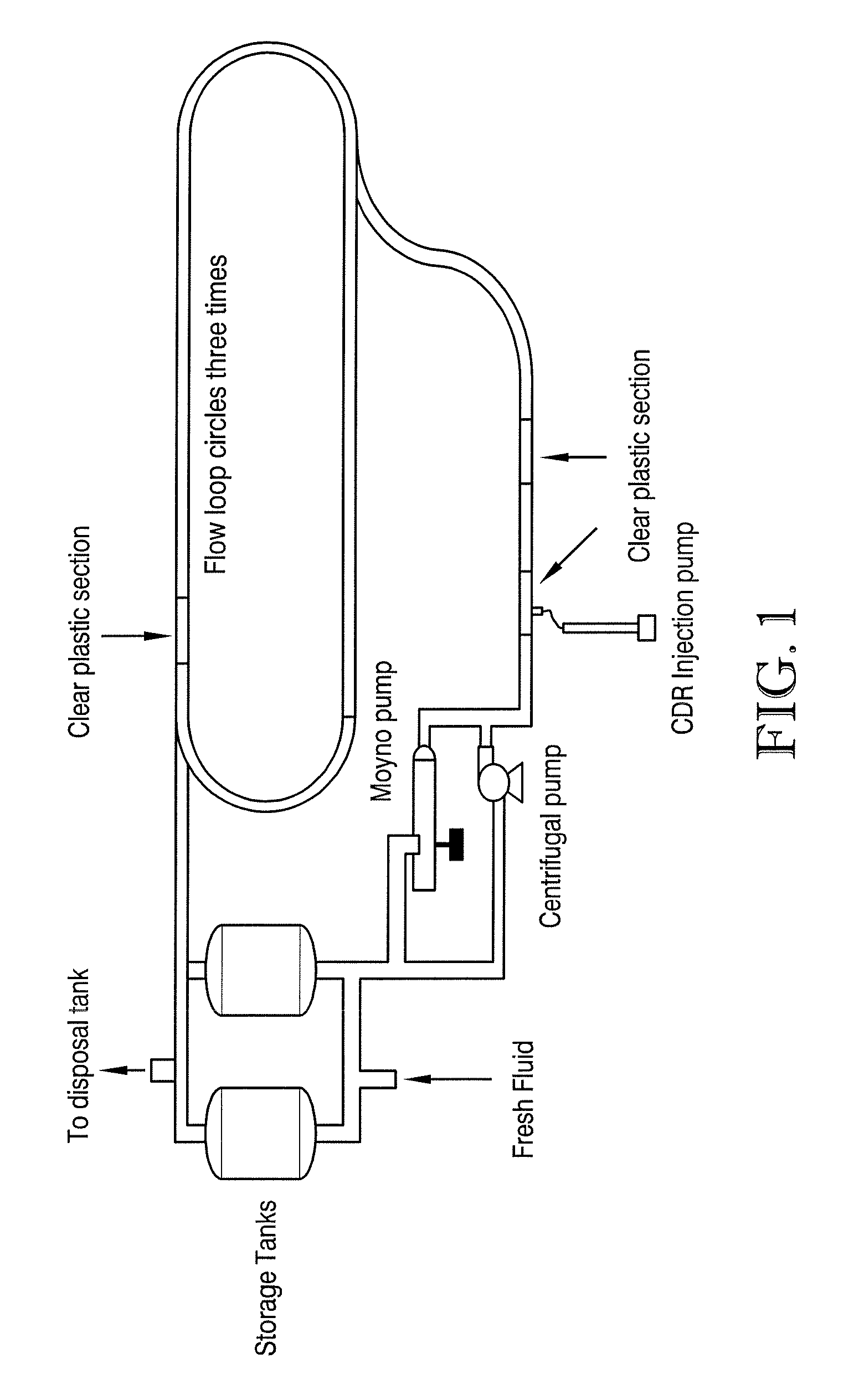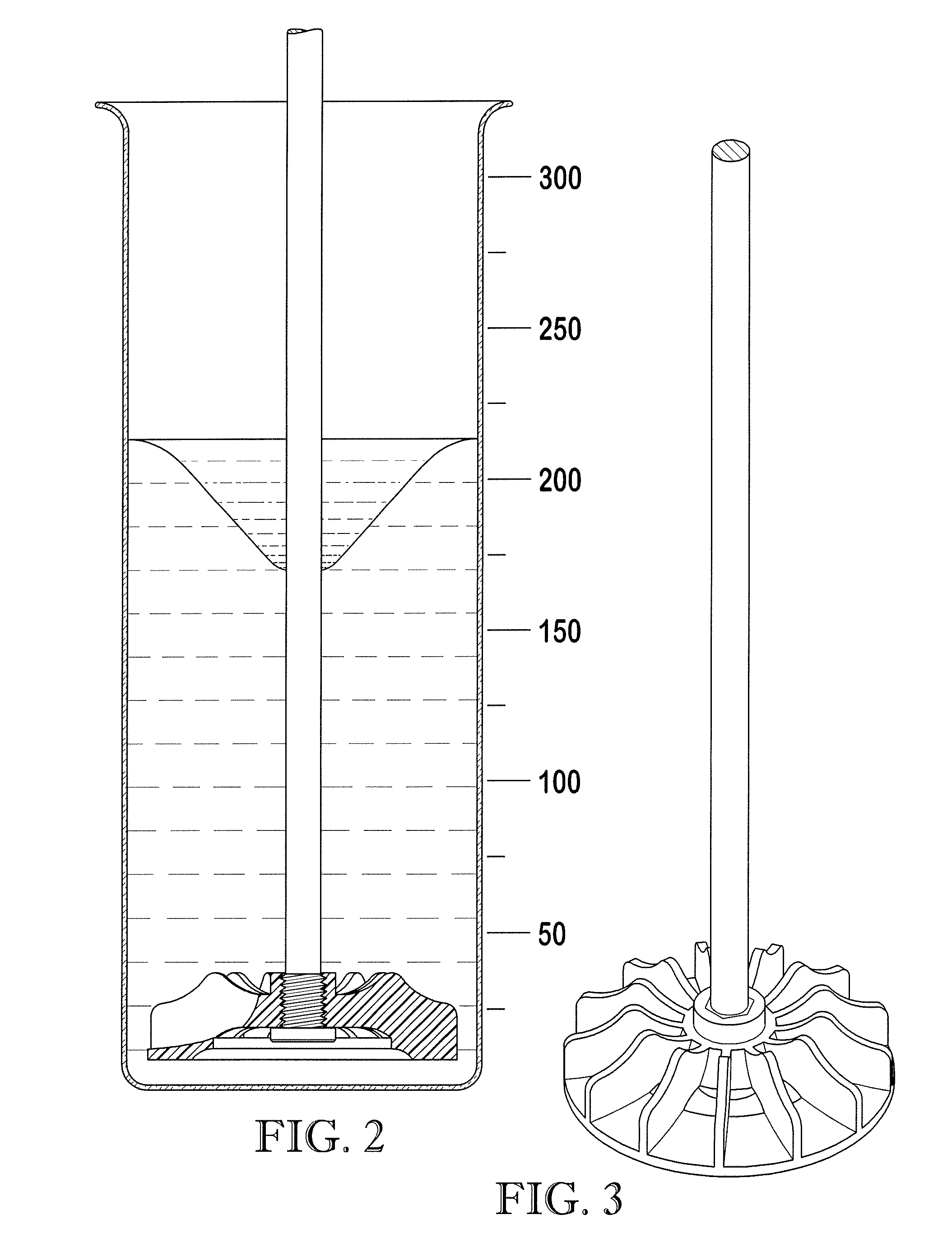Modified latex drag reducer and processes therefor and therewith
a technology of drag reducer and emulsion, which is applied in the field of latex drag reducer, can solve the problems of increasing equipment and operation costs, and causing a large amount of damage to the structure of the latex emulsion, and achieving the effect of improving the stability of the structure and reducing the cost of the method
- Summary
- Abstract
- Description
- Claims
- Application Information
AI Technical Summary
Benefits of technology
Problems solved by technology
Method used
Image
Examples
example 1
Emulsion Polymerization of 2-Ethylhexyl Methacrylate Using Redox Initiation
[0056] In this example, an initial latex according to the present invention was prepared. Generally, 2-ethylhexyl methacrylate was polymerized in an emulsion comprising water, surfactant, initiator, and a buffer.
[0057] More specifically, the polymerization was performed in a 300 mL jacketed reaction kettle with a condenser, mechanical stirrer, thermocouple, septum ports, and nitrogen inlets / outlets. The kettle was charged with 0.231 g of disodium hydrogenphosphate, 0.230 g of potassium dihydrogenphosphate, and 4.473 g of sodium dodecyl sulfonate. The kettle was purged with nitrogen overnight. Next, the kettle was charged with 125 g of deoxygenated HPLC-grade water, the kettle contents were stirred at 300 rpm, and the kettle temperature set to 5° C. using the circulating bath. The 2-ethylhexyl methacrylate monomer (100 mL, 88.5 g) was then purified to remove any polymerization inhibitor present, deoxygenated...
example 2
[0061] In this example, the drag reduction capabilities of the 38% poly-2-ethylhexyl methacrylate polymer emulsion prepared in Example 1 were evaluated in a #2 diesel fuel system. The test device used in this example was a two inch Engineering Loop Re-circulation Test apparatus as shown in FIG. 1. This test allowed for the evaluation of drag reducer performance when injected in non-predissolved form into a hydrocarbon fluid in the flow loop. The test was used to simulate performance profiles and drag reducer behavior in field pipelines over a three-hour time period in terms of dissolution, peak performance, and degradation of the drag-reducing polymer.
[0062] In the two inch pipe-loop recirculation test, 600 gallons of diesel at 70° F. was recirculated from a mixed reservoir through a 2-inch diameter pipe loop and back to the reservoir. Approximate holdup in the pipe is 100 gallons. The diesel was recirculated at 42.3 gpm using a low-shear progressing cavity pump. Pressure drop was ...
example 3
[0073] Toluene (104.15 g) was added to a 600 ml beaker and the beaker placed under an overhead stirrer equipped with a 2 inch diameter 3-blade propeller. The stirrer was adjusted to 250 rpm and 41.675 grams of sorbitan sesquioleate (available as Lumisorb SSO from Lambent Technologies, Skokie, Ill.) was added and mixed for 10 minutes until it dissolved. A Portion of the emulsion prepared in Example 1 (104.175 g) was then added and the systems mixed for 20 minutes. The composition had a density of 0.939 g / ml and a Brookfield LVDVII+ viscosity of 3700 mPa·s using a #4 spindle at 12 rpm. The composition in terms of percent by weight was as follows:
Emulsion from Example 141.67%Toluene41.66%Sorbitan sesquioleate16.67%
[0074] The dissolution rate of this material was measured using the dissolution rate test described above. The results show that the modified emulsion polymer had good dissolution properties which improve with increasing temperature.
Temperature, ° C.Dissolution Rate Const...
PUM
| Property | Measurement | Unit |
|---|---|---|
| mean particle size | aaaaa | aaaaa |
| freezing point | aaaaa | aaaaa |
| freezing point | aaaaa | aaaaa |
Abstract
Description
Claims
Application Information
 Login to View More
Login to View More - R&D
- Intellectual Property
- Life Sciences
- Materials
- Tech Scout
- Unparalleled Data Quality
- Higher Quality Content
- 60% Fewer Hallucinations
Browse by: Latest US Patents, China's latest patents, Technical Efficacy Thesaurus, Application Domain, Technology Topic, Popular Technical Reports.
© 2025 PatSnap. All rights reserved.Legal|Privacy policy|Modern Slavery Act Transparency Statement|Sitemap|About US| Contact US: help@patsnap.com



